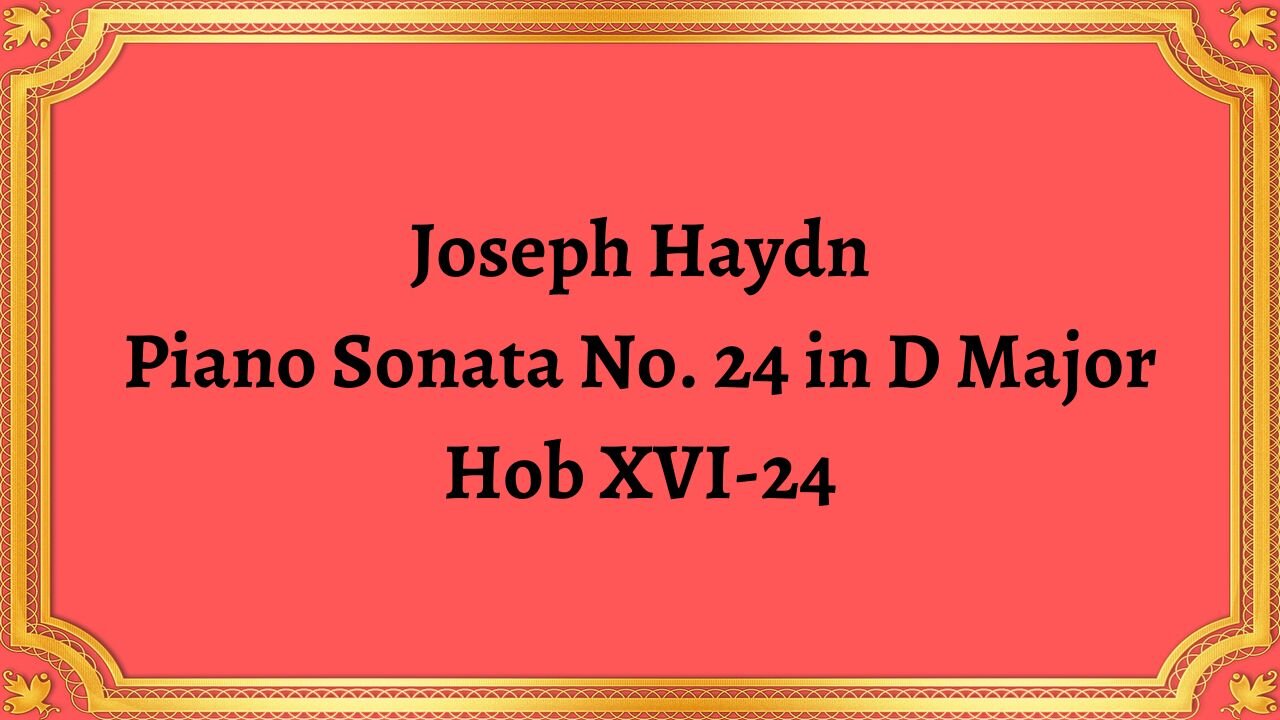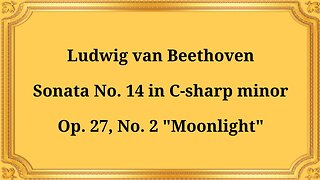Premium Only Content

Joseph Haydn Piano Sonata No. 24 in D Major, Hob XVI-24
#JosephHaydn #PianoSonata #DMajor #HobXVI24 #classicalmusic #musiccomposition #performance #technicalcomplexity #emotionaldepth #harmonies #melodies #musicanalysis #musictheory #musicappreciation #musiceducation #musicperformance #musicology #musichistory
Joseph Haydn’s Piano Sonata No. 24 in D Major, Hob XVI-24 is a remarkable piece of classical music that has captivated audiences and performers alike for centuries. Composed by the Austrian master in 1773, this sonata is considered one of Haydn’s most significant works in the piano repertoire.
The piece is composed of three movements: an opening Allegro, a central Adagio, and a closing Rondo or Allegro. The Allegro begins with a cheerful and lively theme, which is playfully developed throughout the movement. The harmonies move freely, highlighting Haydn's inventive and unique harmonic language. The Adagio, in contrast, is solemn and introspective. Its gentle melody carries the listener into a serene and contemplative space that is further elaborated through the harmonies. The closing Rondo or Allegro is bouncy and rhythmic, full of radiant energy and effusive joy.
One of the most striking features of Haydn’s Piano Sonata No. 24 is its technical complexity and musical depth. The piece demands exceptional skills from the pianist, with rapid scale passages, complex rhythms, and precise timing. The Adagio is a testament to Haydn's musical depth, with its use of novel and inventive harmonies, which creates a hauntingly beautiful effect. The closing Rondo or Allegro, on the other hand, showcases Haydn’s talent for creating memorable and infectious melodies.
In addition to its technical demands, Haydn's Piano Sonata No. 24 has an emotional depth that makes it especially moving. The piece is joyful, yet also serious, and is capable of stirring the listener's feelings profoundly. The intricate harmonies and unique musical structures provide an engaging listening experience that holds the listener's attention throughout its three movements.
In conclusion, Haydn’s Piano Sonata No. 24 in D Major, Hob XVI-24 is an exceptional piece of music that has become an essential part of the classical piano repertoire. Its technical demands, emotional depth, and musical inventiveness have made it a favorite among music lovers and performers worldwide. A performance of this sonata requires an accomplished pianist who can navigate its challenges and bring out the music's beauty, energy, and emotional power.
You have the opportunity to support the channel https://destream.net/live/RadSiarAl/donate
-
 18:26
18:26
Classical music_Music Inspiration
1 month agoLudwig van Beethoven Sonata No. 14 in C-sharp minor, Op. 27, No. 2 "Moonlight"
791 -
 LIVE
LIVE
LFA TV
11 hours agoLFA TV ALL DAY STREAM - THURSDAY 7/31/25
8,373 watching -
 1:02:45
1:02:45
Game On!
17 hours ago $1.55 earnedFootball is BACK! NFL Hall of Fame Game 2025
9.4K -
 LIVE
LIVE
JuicyJohns
46 minutes ago🟢#1 REBIRTH PLAYER 10.2+ KD🟢$500 GIVEAWAY SATURDAY!
121 watching -
 LIVE
LIVE
FusedAegisTV
22 hours ago3rd Party Partner Showcase Nintendo Direct! REACTION 7.31.2025 | FusedAegis Presents
163 watching -
 13:30
13:30
WhaddoYouMeme
17 hours ago $3.59 earnedIt All Makes Sense Now
11.6K21 -
 2:00:05
2:00:05
Nick Freitas
16 hours agoIs Conservatism Dead?
12.8K18 -
 LIVE
LIVE
PudgeTV
8 hours ago🟠 Gaming on Rumble | Frostpunk 2 - Completing Chapter 2
80 watching -
 22:07
22:07
Jasmin Laine
17 hours ago'You Think This Is NORMAL?!'—U.S. Official STUNS CTV With BRUTAL Mic Drop
13.4K37 -

BEK TV
1 day agoTrent Loos in the Morning - 7/31/2025
10.6K